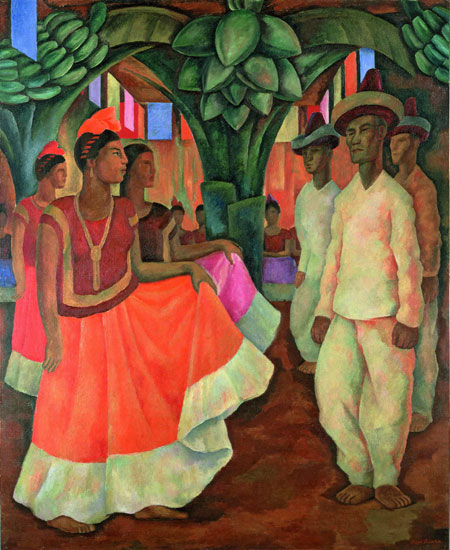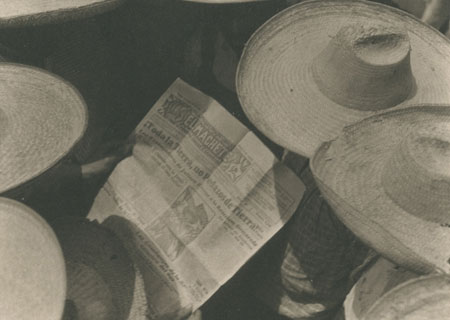William Kherbek heads to the Royal Academy of Arts to its exhibition exploring the country’s influence on artists, from Mexico and beyond, during the height of its art boom

If there is only one central fact to be taken away from the writings of Roberto Bolaño, it’s that Mexico does strange things to your mind. The closest thing contemporary literature has to Dostoevsky, Bolaño writes of characters being visited by moments of “pure Mexicanness” during which they make life changing yet totally irrational decisions. It seems that in the years on which the Royal Academy of Art’s exhibition, Mexico: A Revolution in Art 1910-1940, focusses, a number of European and American artists went on the hunt for a different kind of pure Mexicanness and were themselves visited by Bolaño’s formulation of the concept.
The astute reader will note that the title of the show reads “A Revolution in Art” not “A Revolution in Mexican Art”. One of the surprises, for me at least, was how much of the show was composed of works by non-Mexican artists. Whatever the reasons for this curatorial selection, it gives the viewer the opportunity to pose a familiar but necessary question demanded when European cultures collide with various ‘Others’: if Mexicans were good for European art, were Europeans good for Mexican art? It’s a question I don’t think A Revolution in Art comes close to answering, but it does an admirable job in documenting the currents of influence as they circulated between artists like Diego Rivera and the Canadian Leon Underwood.
“If the show is anything to go by, perhaps photography was the great Mexican art form from the time period”
Rivera’s art, however ideological it may have been at times, is art of the world, bodies, clothes, leaves, weight and physicality. Rivera’s contribution to the show, ‘Dance in Tehuantepec’ is about as characteristic an example of this tendency as any of his works. Not ‘realistic’ in any normal usage of the term, it is, nevertheless, a painting of a place and time. You could imagine drinking a beer at the bar in Tehuantepec while the dancers cut loose. Underwood’s ‘Moctezuma’s Voices’, situated more or less opposite ‘Dance at Tehuantepec’ couldn’t present a sharper contrast. In the work, the great lost Aztec ruler spurns humanoid visions floating above him while seated above a ghostly serpent about as physical as Puff the Magic Dragon. It’s a work that William Blake would probably have regarded as too fanciful to take seriously. This is not to say Underwood’s painting isn’t interesting, there are number of his works in the show and they all have a Kokoschka-esque surreal arcadianism about them that is intriguing, but which tells you less about Mexico than about Europeanised dreams of it.
More true to time and place, or, to an extent, timelessness and place, is the work of the criminally and perpetually under appreciated American painter, Marsden Hartley. His view of Malcolm Lowry’s favourite magic mountain, Popcatapetl, and his enthralling ‘Earth Warming’ landscape of mesas and clouds represent a kind of flinty mysticism that is Romantic without being romantic. Or maybe it’s the other way around. Mexico certainly did seem to bring out the romantic side of Josef Albers who has some uncharacteristically emotional compositions in the show inspired by his travels in Mexico.

If the show is anything to go by, perhaps photography was the great Mexican art form from the time period. Masterful works by Tina Modotti, Augustin Jiminez and Manuel Alvarez Bravo demonstrate that Mexicans had a rather more clear-eyed view of their own revolution (political and visual) than most of the European adventurers in their midst. The exception proving the rule is perhaps Henri Cartier-Bresson whose works have a rare capacity to treat Mexico as a real place, as interesting for its normalities as its strangenesses. His works, particularly when displayed beside works by Alvarez Bravo demonstrate that for all the artistic revolutions happening in the minds of European artists, the real revolution was a nation of people beginning to take ownership of their own story.
Mexico: A Revolution in Art 1910-1940 runs until 29 September at Royal Academy of Art, Burlington House, London W1J 0BD




